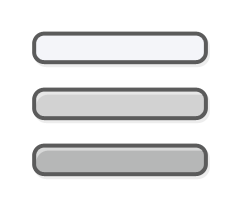Install Steam
login
|
language
简体中文 (Simplified Chinese)
繁體中文 (Traditional Chinese)
日本語 (Japanese)
한국어 (Korean)
ไทย (Thai)
Български (Bulgarian)
Čeština (Czech)
Dansk (Danish)
Deutsch (German)
Español - España (Spanish - Spain)
Español - Latinoamérica (Spanish - Latin America)
Ελληνικά (Greek)
Français (French)
Italiano (Italian)
Bahasa Indonesia (Indonesian)
Magyar (Hungarian)
Nederlands (Dutch)
Norsk (Norwegian)
Polski (Polish)
Português (Portuguese - Portugal)
Português - Brasil (Portuguese - Brazil)
Română (Romanian)
Русский (Russian)
Suomi (Finnish)
Svenska (Swedish)
Türkçe (Turkish)
Tiếng Việt (Vietnamese)
Українська (Ukrainian)
Report a translation problem



That doesn't answer my question in the slightest. I'm not complaining about the deck merely trying to understand the logic behind it.
I'm just confused because the maths points towards it basically being unplayable but it clearly works when while climbing the ladder and watching a friend climb seeing them in Diamond and Mythic
probably just luck & coincidence
having 250 maximum cards does help against some mill builds though
but 60 card decks will always just be a better option.
250 card decks are for people that want more random cards in their life or are scared of mill decks or just want to have answers to everything and be a tool box.
- more resistant to milling and self-milling (you can see it occasionally in green-black decks that have a lot of self-milling for sake of graveyard interactions)
- more resistant to heisting
- more resistant to "exile all cards with the same name from deck" effects (although this one can be done by simply not playing 4x copies of each card)
- more choices when tutoring
- reduces the impact of drawing cards on drawing probabilities (e.g. if you have 6 non-lands and 4 lands, then after drawing 4 lands you now have 0% chance to draw lands again, but in 250-card deck it would be still close to the initial amount), although it's usually the opposite of what the players are aiming for
- makes cards like Battle of Wits viable
- it confuses opponent and makes he thinks that you're a noob for having more than 70 cards in deck
I started doing it because I couldn't choose which cards I actually wanted in my 60. They were all so good! I ended up with about 120.
Then I got milled out. Then a few more times over the course of a week. I said "nope", and added basically every synergistic card.
Then I whittled it down again to around 220 from 280-ish. Whatever the max was. It was alright, but it wasn't "fun". It wasn't fun for me because I didn't have a lot of mythics/rares. So I wildcarded some "fun" cards like Elesh Norn, Grand Cenobite (I usually play mono white) and it went back up to ~260 now.
I've got a couple Idyllic Tutors to pick out some useful tools like Static Net, but the odds of picking one up are a cool 1/130 or so.
How do we "always get the cards we need"? We don't honestly. So many games I've conceded just because I keep top decking lands. As an average, though? It's maybe 1 out of 10 games I have to mulligan because it sucks, and maybe another 1 out of 10 are losses because I kept the hand but didn't draw what I needed.
That's really interesting thanks for answering.
I've discovered most of the 250 card decks I go vs are pretty much black with a splash of other colours not sure if that swings the win % around or not.
Also it doesn't force you exactly, just nudges things in that direction assuming your card distribution is right. No amount of smoothing will save you if you're running a 250 card deck with 10 lands.
statistically speaking as long as the deck builder has the correct land ratio (about 40%) they should "brick" no more or less often than any other deck.
Also (as long as the deck builder has done the mana curve properly) they should curve out just as well as a 60 card deck.
Same goes for most things.
The point where 250 card decks don't do quite as well is that their synergy is generally not as strong as 60 card decks: a 60 card deck is somewhere between 9-18 discrete non-land cards (probably about 10-11) which are chosen to work well together & play off each other.
For a 250 card deck that's probably about 40 (38-75) different cards that all have to play well together.
It'll still function as well as a 60 card deck in terms of letting you play the game, but you're not necessarily going to find you best interactions all the time.